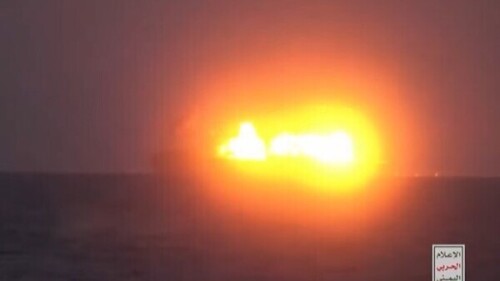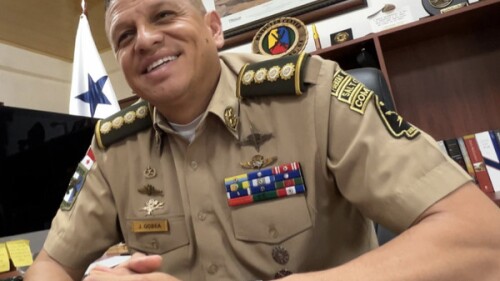As I noted in my West Point CTC Sentinel study on the Islamic State’s more recent caliphs, the group has had little to say in an official capacity about those who have succeeded the first caliph Abu Bakr al-Baghdadi, who was killed in an American raid in October 2019. While some 18 months have passed since the killing of Baghdadi’s successor Abu Ibrahim al-Hashimi al-Qurashi, the Islamic State has yet to publish an official biography of him. Virtually all the information so far has come from the group’s enemies.
Recently, however, it would seem that some supporters have circulated an unofficial brief biography of him. Aaron Zelin drew it to my attention and suggested translating it. Even if the biography is not error-free, it is worth presenting nonetheless. Among other things, the biography notes his nicknames as Hajji Abdullah Qardash, confirming he was among the Iraqi Turkmen members of the Islamic State (though Turkmen by language, not necessarily racial lineage), and also provides considerable detail on his career inside the Islamic State, including the crimes of genocide against the Yezidis, and how he eventually rose to become a deputy of Baghdadi. The biography is presented below, though I have inserted some parenthetical insertions in square brackets for clarification.
The Imam Abu Ibrahim al-Hashimi al-Qurashi was born and raised in Tel Afar. He graduated from the college of Shari’a [Islamic law] in Mosul University. He was taken to compulsory military service and soon enough repented after meeting Abu Ala’ al-Qurashi [Abu Ali al-Anbari], at whose hands he studied ‘Ilm. He entered the al-Jazira camp and was one of its founders. He gave allegiance to Jama’at al-Ansar as a companion to the shaykh, and he worked as a member of its military personnel in his hometown of Tel Afar. He gave allegiance to the al-Qa’ida organisation and was appointed as a deputy to its amir. He waged the first battle of Tel Afar [a battle waged by U.S. and Iraqi forces against insurgents in Tel Afar in 2005], bringing suffering upon the Crusaders and Rafidites [the Shi’a]. He was taken prisoner among the Americans and remained in Bucca prison for a period of time during which he became preoccupied with lecturing. He got out and was appointed Shari’i official [religious official] for the Mosul sector, then as a judge for all of Wilayat Ninawa [Ninawa province, centred on Mosul]. He was asked to join the Shari’i Commission and remained a lieutenant for Shaykh Abu ‘Ala’. He was assigned to al-Sham [Syria] following the fitna [referring to Jabhat al-Nusra’s split from Islamic State in April 2013] and he established the detachments and institutes there. He returned to Iraq just before the conquest [referring to the group’s seizure of large parts of the country in June 2014] and participated in the breaking of the walls of Badush prison [located near Mosul] and the conquest of Mosul and then Tel Afar. He led the expeditions against Sinjar and Zummar and took revenge for the Kurdish sister Dua’ [referring to a Yezidi woman who reputedly converted to Islam to marry a Muslim man and was killed by her community in 2007 in an ‘honour killing’] by taking the Yezidi women captive [to enslave them] and killing their men.
He was appointed as a deputy to the wali [governor] of Iraq Abu Yahya, so he moved about between its wilayas, directed its armies and managed its diwans [Islamic State government departments]. He became supervisor of Wilayat al-Iraq [Iraq province] and was appointed leader of the Bayt Mal al-Muslimin [Islamic State’s treasury department] in succession to Abu ‘Ala’. He fought in the epic battle of Mosul [2016-2017] and was then assigned by the imam [caliph Abu Bakr al-Baghdadi] to al-Sham to investigate the fitna [referring to the internal ideological disputes in Islamic State]. He supervised the Delegated Committee [overall governing committee of the Islaic State] and the Methodological Committee and served as a deputy to the Amir al-Mu’minin [Baghdadi]. He put an end to the fitna, killed the leaders of Jahmism and Irja’ [referring to ideological deviants seen as a threat within the Islamic State and suppressed in the period 2017-2018]. He put an end to the functions of the diwans and converted them to military assets [i.e. the non-military departments were cancelled and their personnel transferred to military roles etc.], so most of the wretched ones fled.
He withdrew to the Anbar desert after the Battle of al-Baghuz [2019] then moved to al-Sham. He was given allegiance as caliph of the Muslims and Amir al-Mu’minin in succession to the Imam Abu Bakr al-Samara’i [Abu Bakr al-Baghdadi], so he began his caliphate by announcing the raid of revenge for the two shaykhs [Abu Bakr al-Baghdadi and the spokesman Abu al-Hasan al-Muhajir]. The caliphate expanded during his tenure to new countries in Africa and the Far East, revitalised the centrality of Iraq and al-Sham in the war on the idolaters, and a bounty of $10 million was placed on his head by the Crusader coalition. The Crusaders carried out a raid coming down from the air on the place where he lived with his relatives, so a clash took place between him and them for hours.
He blew up his explosive belt and died, and then the cowards withdrew after the killing of a number of them in Jumada al-Akhira 1442 AH [sic: the year meant is 1443 AH, and the corresponding Gregorian period is the beginning of February 2022 CE].








